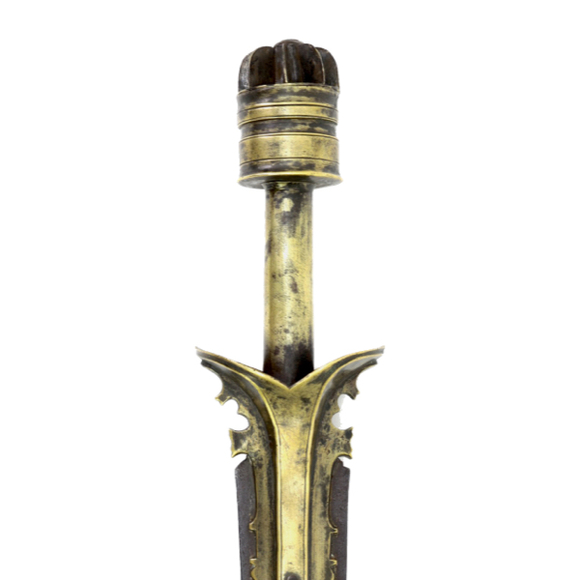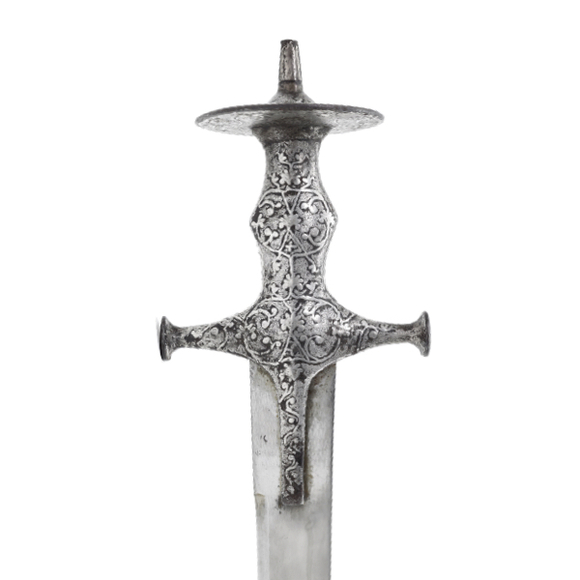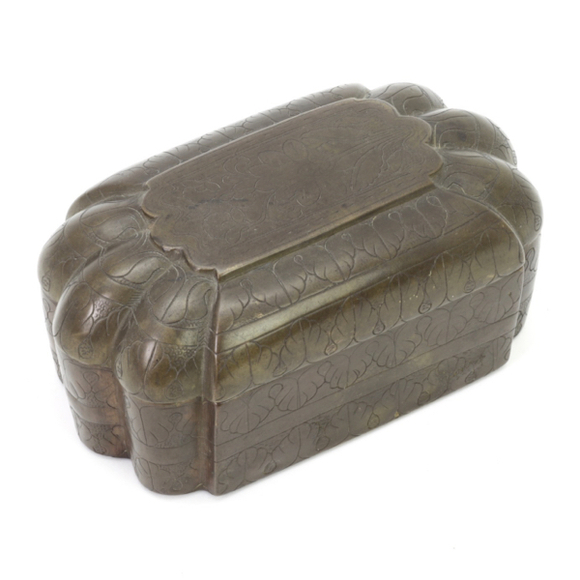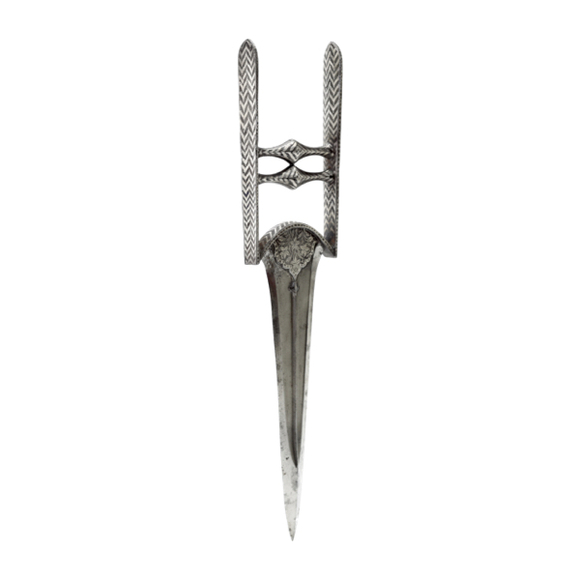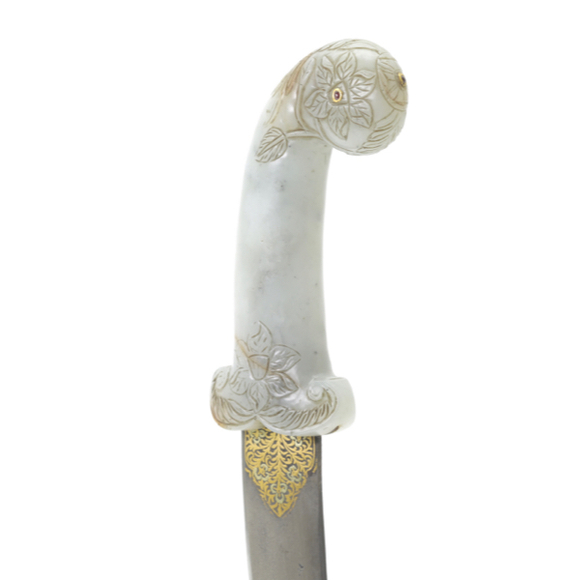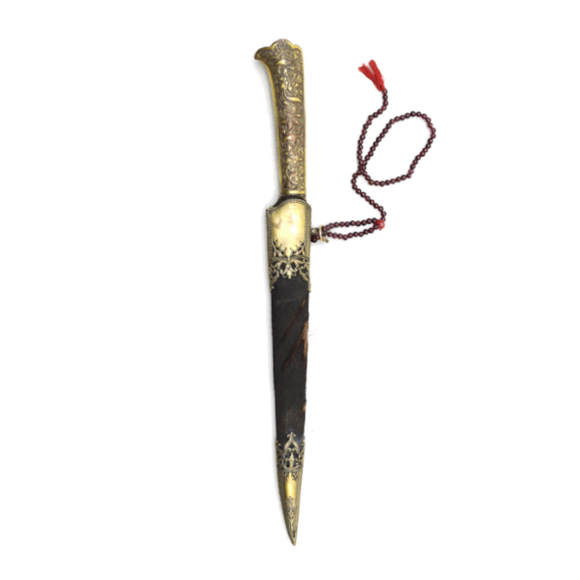Language: English
Source: Philip Rawson, 1967
Description
Hindu basket hilt is the English term coined by Philip Rawson to describe a type of Indian closed hilt that is most commonly found on khanda and firangi swords, but which at times also appears on other swords like the Rajput sosun pattah and talwar.1

A typical Hindu basket hilt.
Sold by Mandarin Mansion in 2017.
It is a large type of hilt that offers great protection but is heavy and so it only used to offset a pretty heavy blade. Most Hindu basket hilts are very well made and appear on more luxurious swords.
The appearance of such hilts coincides with early contact with European colonists so it stands to reason that its design was inspired by closed hilts seen in use by them. The design is however very Indian in nature, its basic design consists of an old patissa style hilt with the addition of a wide knuckle protection from guard to pommel plate. At the pommel, there is usually a spike.
"The hilt (kabjâ) of the first three varieties is often surmounted by a spur; useful both for guarding the arm, and for a grasp for the left hand in a two-handed stroke." 2
-W.F. Sinclair, August 1873
Notes to description
1. Philip S. Rawson; The Indian Sword, Herbert Jenkings, London, 1968. Pages 28-29.
2. W.F. Sinclair; List of weapons used in the Dakhan and Khandesh. The Indian Antiquary Vol. 2. August 1873. Page 216-217.
Antique examples
Hindu basket hilts are typically quite well made and tend to appear on more luxurious swords. Here are some I have sold over time.


An all steel, classic khanda with fine wootz blade.
Sold by Mandarin Mansion in 2017.


A large Mughal saber.
Sold by Mandarin Mansion in 2021.

A wonderful khanda that combines southern style piercing and beaded rims with a norhern style blade and gold overlays.
Sold by Mandarin Mansion in 2017 and regretting it.

